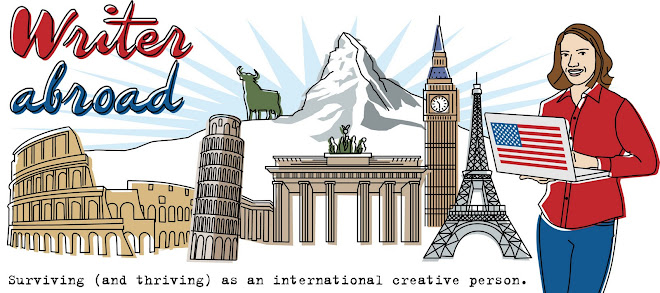
Recently, I was freelancing at an ad agency in Switzerland when we needed another English copywriter for a project. A staff art director asked me to call a copywriter based in Tuscany. Why? He had worked with him before.
So this writer in Tuscany made good money writing remotely from his Tuscan villa. In other words, living the writer’s dream.
But how does one successfully accomplish this lifestyle?
By taking a real job first.
The big question for most freelancers is how to get work. And the big answer? Through contacts. In my experience, the best freelance jobs have come through people I’ve met in Switzerland—local people in my industry.
But when you move to a new country, you probably know very few people (if any). And while some freelancers who live in relatively inexpensive countries can afford to live in a bubble and write for contacts back in their home country, those of us in expensive places like Switzerland (and with home countries whose currencies have been declining in value) need local jobs that pay in local dollars to make ends meet.
So where to start? How about with a real job? Below are nine reasons someone who wants to be a freelancer abroad should get a real job in their desired country first:
1. You’ll obtain industry contacts and get to know the locals on a first name basis. When you go freelance, it will be these very people who recommend you for jobs.
2. You’ll have a proven track record—and not just in your home country. You will be known as the local, international writer.
3. You’ll get a work permit. Many countries have policies that only issue work permits to people who have employers willing to apply for them. Switzerland is one of these countries. If you find a real job, you’ll get the coveted work permit you’ll need to freelance later.
4. You’ll build up a nest egg in local currency and be able to guard against exchange rate fluctuations. For example, if I had only been depending on income/savings in American dollars, I would be in trouble. The dollar has declined about 37% against the Swiss Franc since I moved here five years ago. Ouch. (And another reason to not depend just on jobs from your home country.
5. If you land the job before you move, your moving expenses may be paid for.
6. You’ll understand the local business culture before you go out on your own. For example, do you address people by first names or only very formally? Do you come to the meeting exactly on time or fashionably late? Do you shake hands? How fast do people work? How does one answer the phone?
7. You’ll know what to charge. Chances are, you’ll have worked with other freelancers and have a knowledge of salaries and day/hourly rates. For example, an American just moving to Switzerland may think the equivalent of $25 an hour sounds pretty good. Until they learn that’s what the grocery clerks earn.
7. You’ll understand how people market themselves and how to present yourself both online and with your CV-resume. For example, in many European countries, you are required to list your birthday, nationality, and also include a photo of yourself on your CV.
9. By getting a real job, you’ll learn the local language in a way that working from your apartment all day long just won’t let you accomplish.
What do you think? If you’re a freelancer abroad, did you get a real job first? If so, did it help you later as a freelancer?

